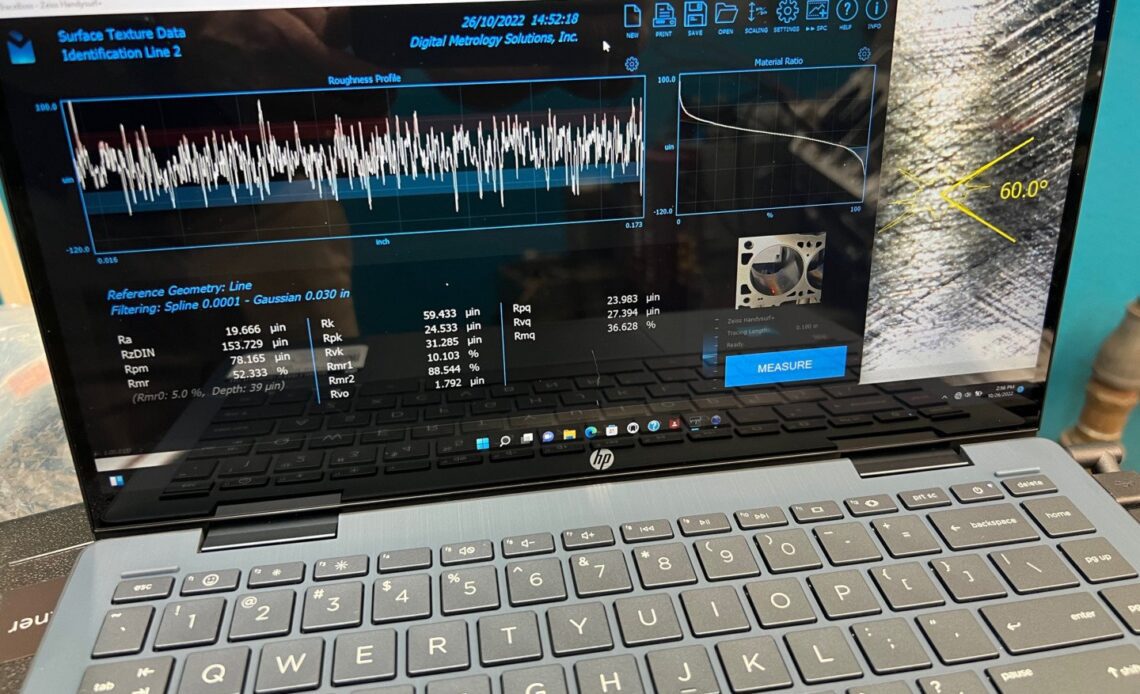If you’re a reader of EngineLabs, you’re likely somewhat familiar with what a profilometer is, what it measures, and how to interpret the data it provides. You probably also know what a fascination we have with tools, gadgets, and metrology (the science of precision measurement) in general. So believe us when we say, this new kit from Total Seal is going to change the game for the average end user.
Quick Rundown Of Profilometer Basics
First, let’s touch on what it is a profilometer does. Simply, a profilometer measures the profile of a surface — usually your cylinder wall — at a microscopic level. As an industry, we’ve learned over the past couple of decades that there can be significant power and longevity increases by simply getting a better cylinder wall finish.
Obviously, you can only be as accurate with your finish as your ability to measure, and traditional profilometers give you some useful data: core roughness, peak height, valley depth, and overall average roughness. This data is extremely useful for a number of facets of ring seal. That data has allowed the engineers at companies like Total Seal and Rottler Machine to work together to get specific finishes for specific ring packs that are unlocking almost silly amounts of horsepower. Now, an even deeper look is possible, and you don’t even need a degree in metrology.
Instead of just four numbers on a screen and an auto-scaled graph, this new kit provides a metric ton of data. Don’t be overwhelmed, though, it’s actually much easier to understand than the four numbers were previously. Notice the red, black, and blue bands on the trace, those are the desired ranges for Rpk, Rk, and Rvk, and you can immediately see anything inside and outside the desired ranges.
Seeing Is Believing
Where this new profilometer system excels is in its data. Besides including a precision profilometer unit from Zeiss, the real gem of the kit is the software used to gather, chart, and store the information gathered from the profilometer. Working with Dr. Mark Malburg — a Doctor of metrology — a software was developed which not only runs the profilometer, but displays the data in a way that can turn a layperson into a metrologist.
Where the traditional profilometer only provided an auto-scaled trace and averaged Rk, Rpk, and Rvk numbers, this new software will show you any outliers, rather than just rolling it all into a single number….
Click Here to Read the Full Original Article at DragzineDragzine…

